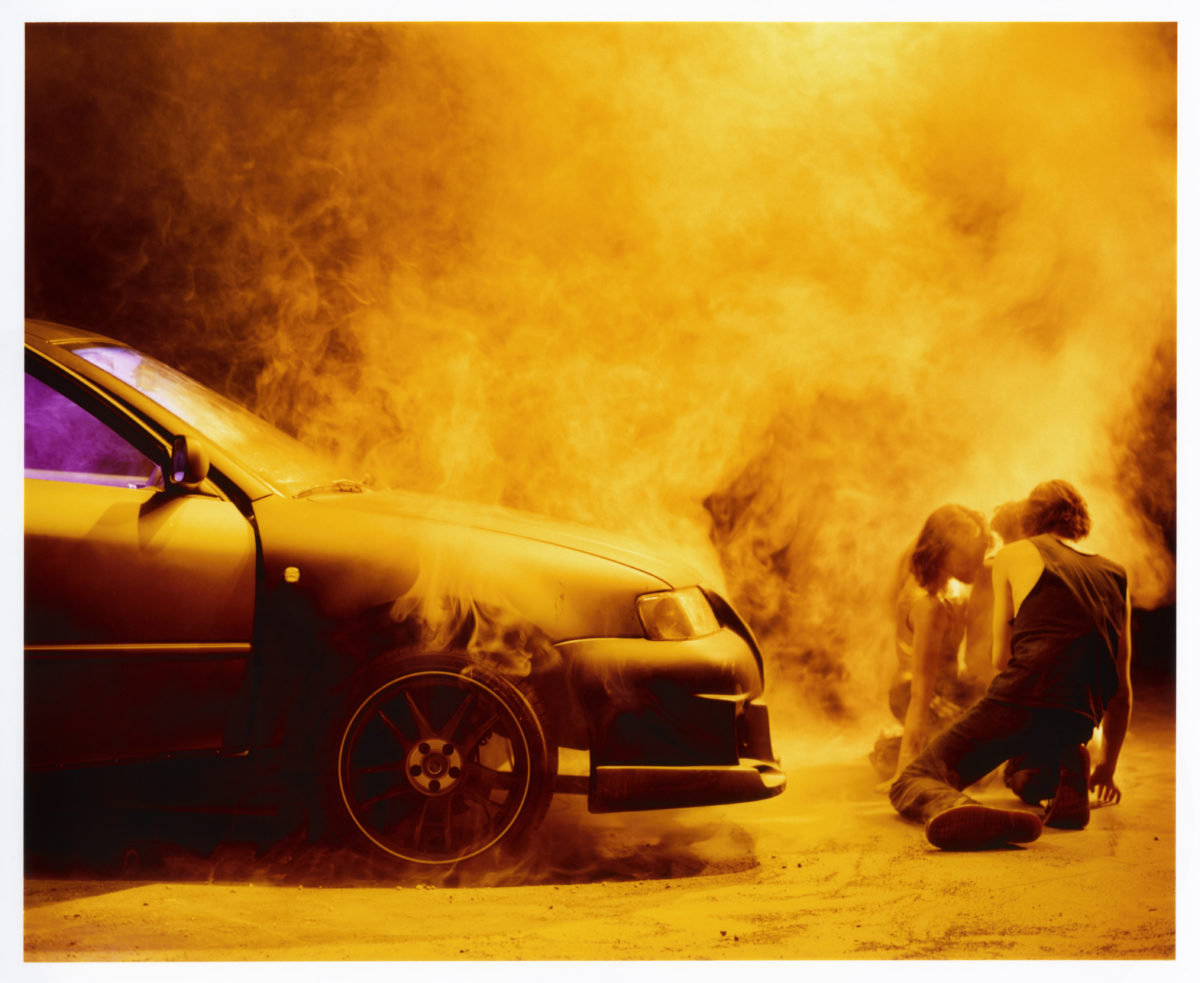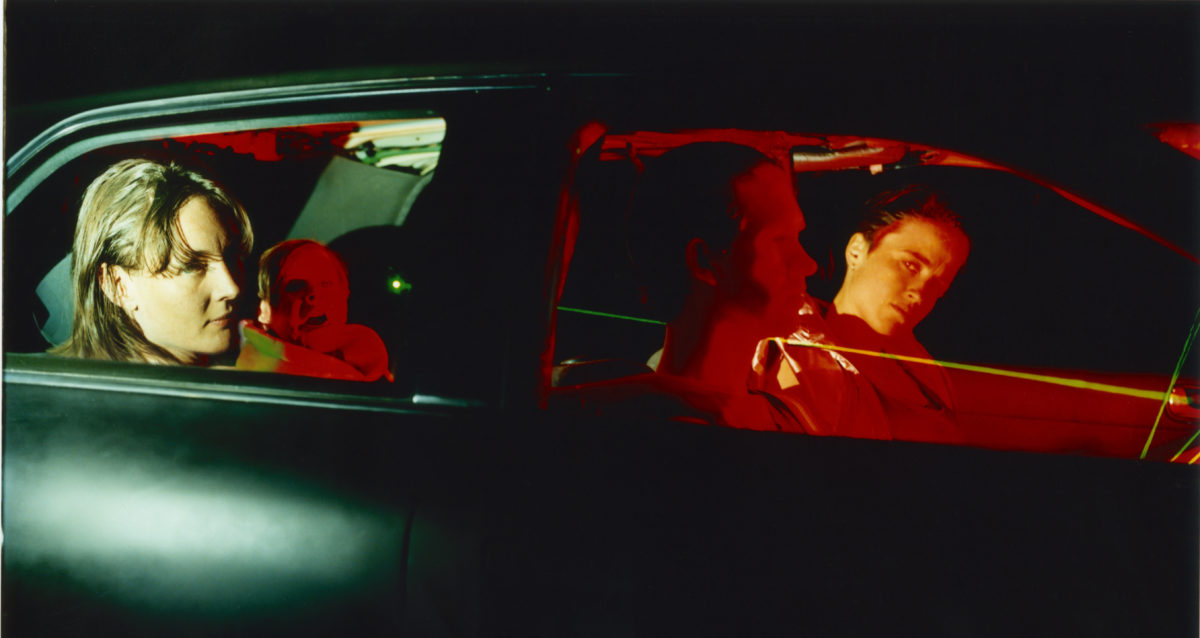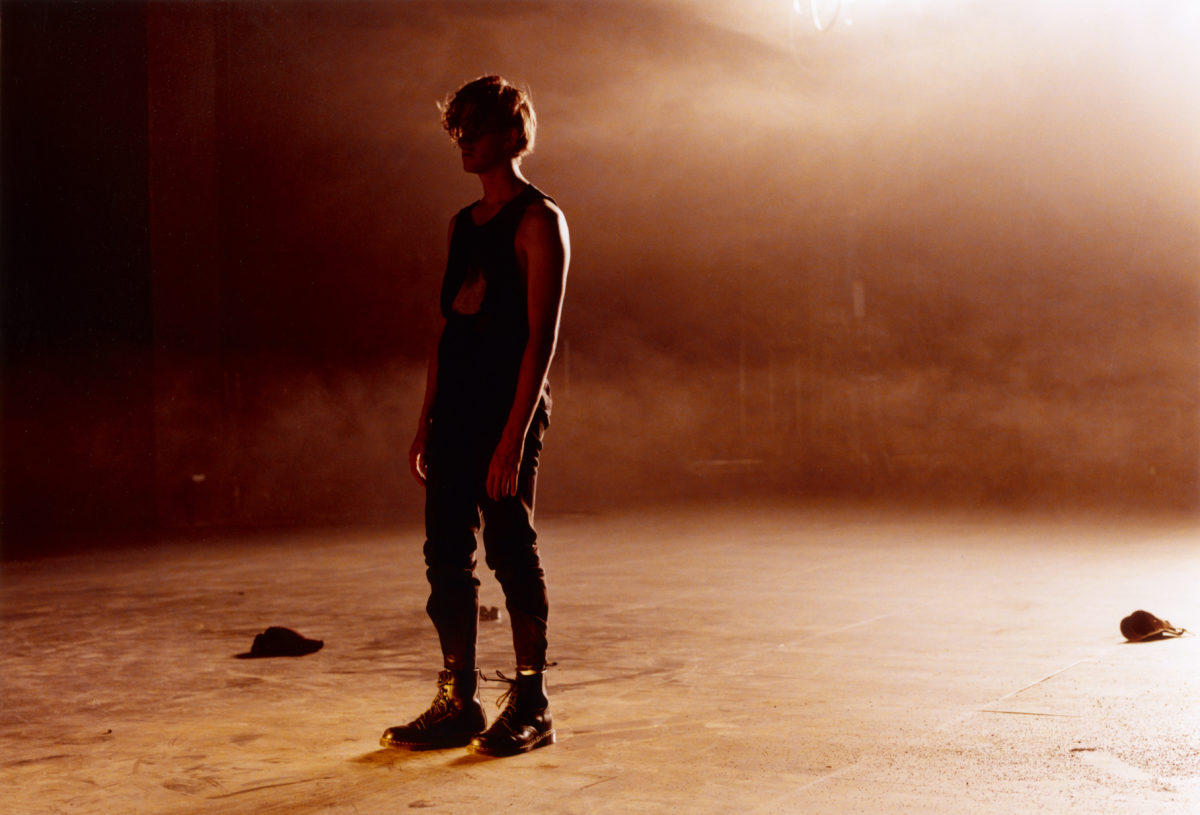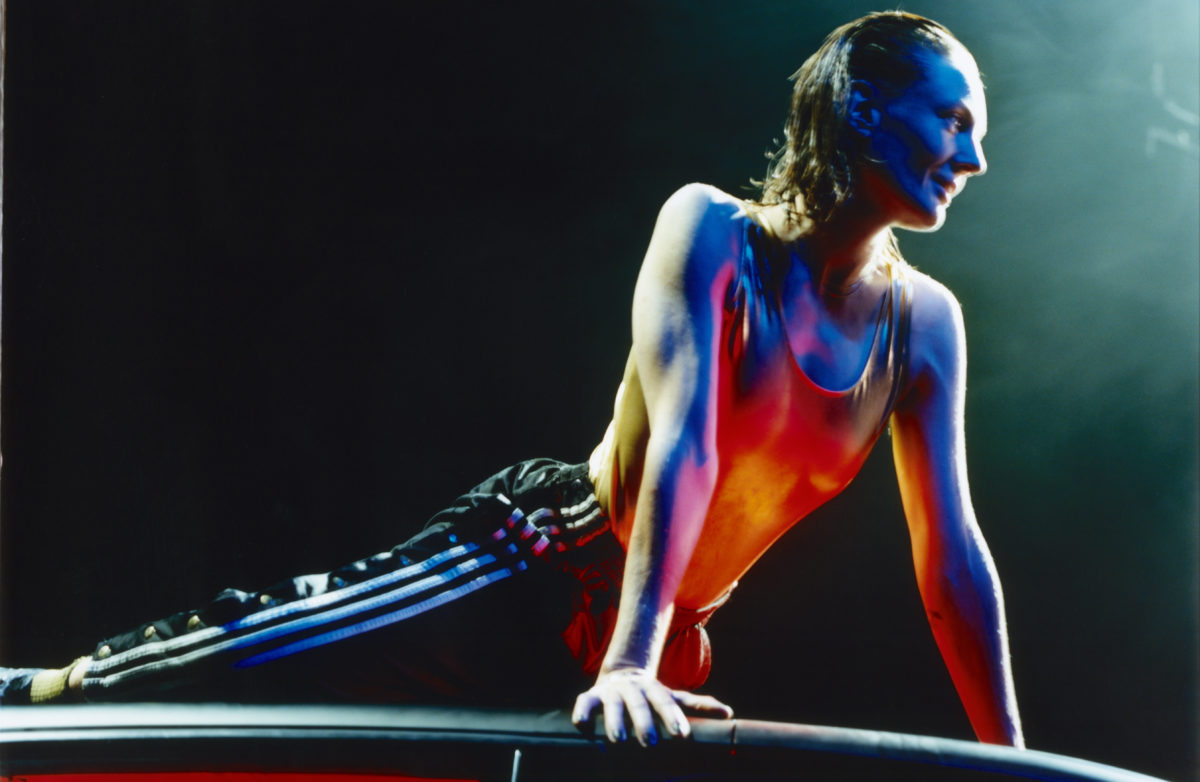EXTRA LIFE
Cast
Conception, choreography, direction & scenography Gisèle Vienne
Created in collaboration and performed by Adèle Haenel, Theo Livesey & Katia Petrowick
Original music Caterina Barbieri
Sound design Adrien Michel
Lights Yves Godin in collaboration with Gisèle Vienne
Texts Adèle Haenel, Theo Livesey, Katia Petrowick & Gisèle Vienne
Costumes Gisèle Vienne, Camille Queval & FrenchKissLA
Conception of puppets Etienne Bideau-Rey & Nicolas Herlin
Stage manager Antoine Hordé
Sound manager Adrien Michel & Géraldine Foucault Voglimacci
Light manager Samuel Dosière, Iannis Japiot & Héloïse Evano
Assistant Sophie Demeyer
Thanks to Elsa Dorlin, Etienne Hunsinger, Sabrina Lonis, Sandra Lucbert, Romane Rivol, Maya Masse, Anja Röttgerkamp & Erik Houllier.
Production and touring Alma Office Anne-Lise Gobin, Camille Queval & Andrea Kerr
Administration Cloé Haas & Giovanna Rua
Partners
Production DACM / Company Gisèle Vienne
Coproduction Ruhrtriennale // Théâtre National de Bretagne – Centre Européen Théâtral et Chorégraphique // MC93 – Maison de la Culture de Seine-Saint-Denis // MC2 : Grenoble – Scène nationale // Théâtre national de Chaillot // Maillon, Théâtre de Strasbourg – Scène européenne // Tandem – Scène nationale de Douai // Points Communs – Nouvelle Scène nationale de Cergy Pontoise // CN D Centre national de la danse // Comédie de Genève // Le Volcan – Scène nationale du Havre // Centre Culturel André Malraux- Scène nationale de Vandoeuvre lès Nancy // NTGent // Cité européenne du théâtre Domaine d’O Montpellier // Festival d’Automne à Paris // Comédie de Clermont // International Summer Festival Kampnagel – Hamburg // Triennale Milano Teatro // Tanzquartier Wien // La Filature, Scène nationale de Mulhouse // .
With the support of Dance Reflections by Van Cleef & Arpels
Presentation
“We can train ourselves to respect our feelings, and to transpose them into a language that matches those feelings so they can be shared. And where that language does not yet exist, it is our poetry which helps to fashion it. Poetry is not only dream or vision, it is the skeleton architecture of our lives. It lays the foundation for a future of change, a bridge across our fears of what has never been before.”
Audre Lorde, “Poetry Is Not a Luxury”
Continuing my work on the systems of perception, their construction, their meaning, and theirpossible displacements, this new creative work develops and unfolds the experience of a single
moment. At the end of the night, after a party, a sister and her brother, adults, meet again for the firsttime in many years.
The close bond between the two siblings, in the context of a violent family, was brutally torn apart by a tragedy 20 years earlier. The system that caused this traumatic experience, this web, is
undone, and it is the openness to sensitivity and the newfound capacity for analysis that will make it possible to construct another architecture, another system, a possible future field of action.
With this work, I am attempting to invent a form in all its visual aspects, one which would enable the unfolding of the different permeable strata that constitute this moment: the past, the present, the anticipated future, the construction of memory, the imagination, all of the various layers that form the experience of this present moment and reveal its density and intensity. It is through the
converging among different formal languages simultaneously or in succession, through these dissonances, that we will experience this archeology of perception.
The power relations that structure the perceptual frameworks, make them invisible in order to naturalize them, and indisputably establish the existing order, are criticized through the very form of
the play and the different types of dialogue that comprise it, with a rabid humor that reveals the grotesque and violent masquerade. The text, developed in collaboration with the performers, attempts to remove conceptual barriers. References to science fiction, both visual and narrative, are omnipresent and protean in the work. They are like those external places, those strange invented situations, all of the decoys that we use in order to externalize the things we refuse to recognize as aspects of the mechanisms by which we function.
Emotions disrupt perceptual frameworks and all of them function as phenomena that allow the development of thought, the questioning of the frameworks present, and the invention of a viable
future. The piece will deal with the way in which the power and inevitable aspect of the development of knowledge are asserted and proceed from the physical relationship to experience, taking the body as its starting point. The thought and speech possible, beginning with an emotional experience, are what shapes this moment unfolded throughout the piece.
The brutal psycho-sociological impacts of imposed perceptual frameworks, such as those of patriarchy and capitalism, generate structural violence of various intensities. The resulting desensitizations and dissociations that arise and shape our intimacy, as well as the exploration of emotional structures and sensory experience, form the basis for building our vocabulary of play and thought that we have been developing with performers for years now. Different aspects of these impacts structure the dramaturgy of the piece.
In the piece, we dissect the experience through games of dissociations within the same body, and through several bodies, as well as the different mediums with which they play very precisely. The
two characters will be interpreted by Katia Petrowick, Adèle Haenel, Theo Livesey, a puppet and the other mediums that make up the scenic language.
This form is being conceived by means of a scenic writing that meticulously articulates music, space, light, choreography, and acting. Placing ourselves at the intersection of different artistic
mediums, intrinsic to the form of stage composition, enables us to better grasp the often unnoticed links of perceptual hierarchies.
The scenic space is constructed with laser lights and classical lights, which make visible these invisible mental and sensitive architectures. These intimate architectures, created in collaboration
with Yves Godin, reflect many of the disorienting internalized structures. The musicality and sculptural qualities of light constitute a score composed on the basis of original music created by Caterina Barbieri. Her compositions are as much musical experiences as experiences of space and matter.
Their intense emotional force participates in the construction of these exteriorized intimacies.
History
-
28, 29 June 2025
-
07, 08 May 2025
-
12, 13 February 2025Théâtre de la Cité, a collaboration with La Place de la Danse, as part of the Festival ICI&LÀ
-
27, 28 November 2024
-
19, 20 November 2024Prague Crossroads Festival, National Theater, Prague
-
02, 03 October 2024Festival Actoral, Zef - Scène nationale de Marseille
-
12, 13, 15, 16 June 2024
-
07, 08 May 2024Theater Hans-Otto As part of Theatertreffen
-
27, 28 March 2024Le Volcan, Scène nationale du Havre, Le Havre (FR) as part of Festival Déviations
-
16, 17 March 2024
-
07, 08, 09 March 2024
-
01, 02 March 2024
-
21, 22, 23, 24 February 2024Comédie de Genève, Genève (CH) as part of festival Antigel - Genève
-
01 February 2024
-
31 January 2024
-
18, 19 January 2024
-
11, 12 January 2024
-
06, 07, 08, 09, 10, 13, 14, 15, 16, 17 December 2023MC93, Bobigny (FR) as part of the Festival d'Automne à Paris & Chaillot — théâtre national de la danse
-
01 December 2023
-
28, 29, 30 November 2023
-
15, 16, 17, 18 November 2023
-
09, 10 November 2023La Filature, Scène nationale, Mulhouse (FR) as part of Scènes d’Automne en Alsace
-
05, 06 October 2023
-
23, 24, 25, 26 August 2023
-
16, 17, 18, 20 August 2023Ruhrtriennale Festival der Künste 2023, Essen (DE) WORLD PREMIERE




